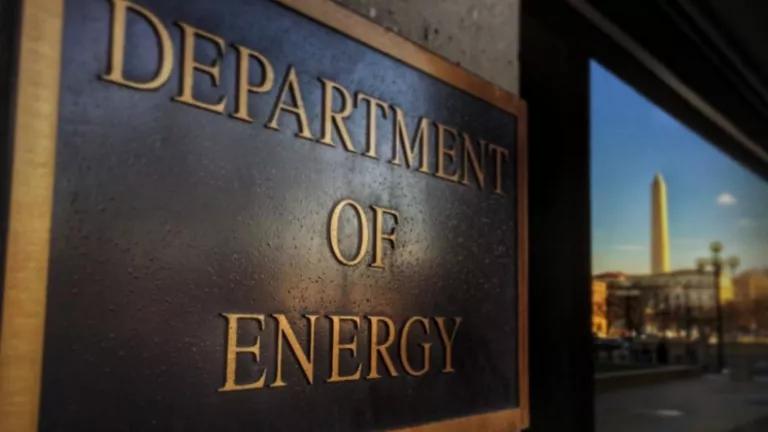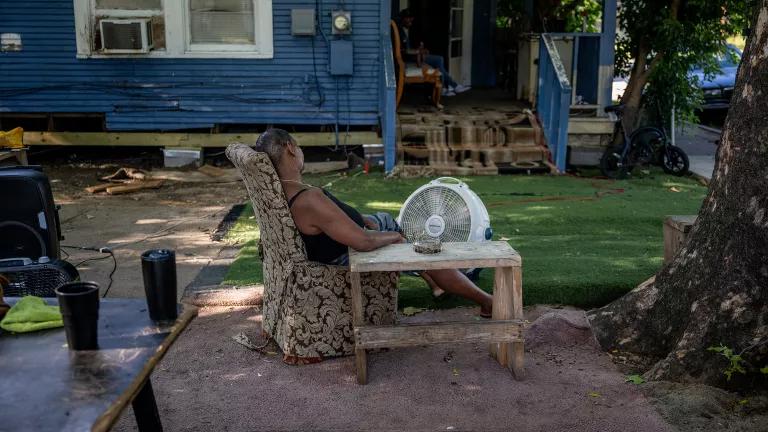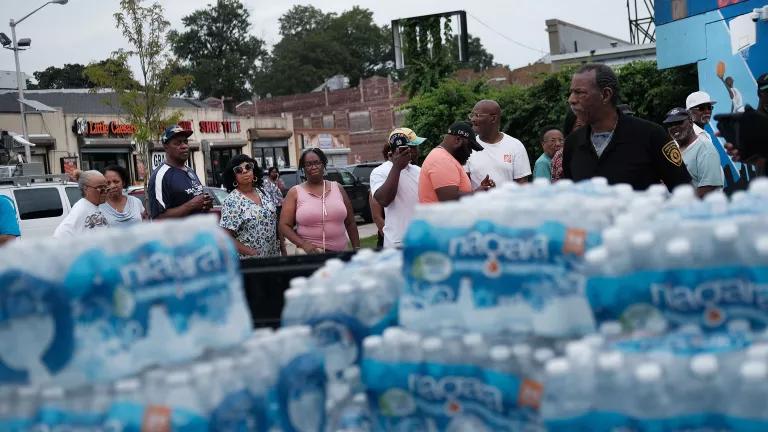Department of Energy’s Test Changes Get Failing Grade
The Department of Energy just finalized a “midnight” rule that jeopardizes a government program, which made it so we avoided millions of tons of carbon dioxide pollution.

The Department of Energy (DOE) just finalized a “midnight” rule that jeopardizes an important government program that for decades has quietly avoided millions of tons of carbon dioxide pollution while simultaneously collectively saving consumers billions of dollars. Under today's action, residential and commercial appliance and equipment manufacturers have an opportunity to write their own tests for measuring how much energy their products consume—and to do so with little government oversight.
The program at issue is DOE’s Appliance and Equipment Efficiency Program. As my colleagues and I have written before, this program saves a tremendous amount of money and energy by improving the energy efficiency of the nation’s appliances as well as its commercial and industrial equipment. DOE efficiency standards also particularly benefit lower-income households that spend a greater portion of their budget on energy as well as renters that are all too often stuck with an inefficient appliance purchased by their landlord. These standards reduce energy burdens and guarantee that all appliances sold meet minimum federal efficiency levels. One wonky, but critical, part of this is the test procedures used to measure the efficiency of products.
For some products it’s straightforward to measure the efficiency, but for others it can be complicated. It takes hard work to make sure the test is fair, accurate, and repeatable, and that it doesn’t create loopholes that can be exploited to make a product appear more efficient than it really is. While no process is perfect, DOE has largely done a great job with these tests.
But what DOE has now created is a pathway for manufacturers to write their own tests with little supervision. This could lead to less efficient products, increasing consumer utility bills and adding carbon and other pollution to the air from generating the extra power needed to run them.
Why Waivers at All?
Sometimes a manufacturer makes a product that can’t be tested using the official procedure. This can happen when a product has a new feature, or a new design, that the test doesn’t anticipate. If this means that the test wouldn’t accurately measure the efficiency of the product, the manufacturer can ask DOE for a waiver: basically a request to use a modified test procedure. These requests include a proposed alternative test. DOE historically has reviewed the request and, if justified, approved the waiver on an interim basis pending a full review.
So far so good. But what DOE has done in the rule published in today’s Federal Register is create a way for a manufacturer’s waiver to go into effect automatically, without any input from DOE. Even if the waiver is eventually denied, the company can keep using its flawed test procedure for 180 days.
As I’ve noted before, if you let students write their own tests, would you be surprised if their grades went up? Under this new rule, manufacturers could write tests that make their products appear more efficient than they really are. Products could be sold that might only appear to meet DOE’s minimum efficiency standards by relying on a flawed test.
Under today’s new rule, all a manufacturer has to do in order to start using the new test is wait 45 business days. If DOE hasn’t ruled on the waiver, which could be extraordinarily difficult for some products with complicated test procedures, the interim waiver is granted automatically.
This will create more problems than it solves. If DOE is concerned that the current waiver process takes too long, the agency should work on improving the approval process. Automatically granting the request is almost like giving up entirely, and there’s nothing to stop manufacturers from manipulating tests to inflate their measured efficiency. And giving manufacturers a free ride on a flawed test for 180 days after a waiver is ultimately denied simply adds to the harm.
The lame duck period—after the presidential election but before a new administration takes office—is the witching hour for government regulations. Outgoing administrations historically attempt to publish so-called “midnight rules,” regulations that are published in the final weeks and days of an administration. Of course, the ability to publish regulations does not disappear the day after the election. But sometimes these rules lack the effective reasoning and benefits to the public that all regulations should have.
Unfortunately, this DOE midnight rule is just such a rule. It’s a giveaway to manufacturers, and one that harms a program that is hugely beneficial to consumers. It’s also the latest blow to what has historically been one of the federal government’s strongest tools for saving energy. We will evaluate all possible options for putting this program back on track and reversing this harmful rule.




